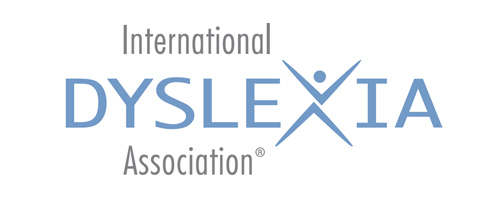A Brief History of the IDA Southwest Branch
On May 9, 1984, the first meeting of the unofficial New Mexico Branch of The Orton Dyslexia Society met, and a steering committee was formed that included Sandra Dillon, Patricia Tomlan, and Betty Lansdowne. A second meeting was held on September 15, 1984 at Sandra Dillon’s home and plans were made to become an official branch of The Orton Dyslexia Society. Approximately twenty-five people attended that meeting, and officers were elected. A bylaws committee was formed, and Southern Arizona and West Texas joined our membership in the spring of 1985. In January, 1985, we officially became the New Mexico Branch-in-Formation of the Orton Dyslexia Society. During that first year, the branch had six officers, six members of the Board of Directors, and 49 members. The first branch conference was held in March of 1986 at the Marriott Hotel in Albuquerque. The Curtis Blake Foundation funded it, and 101 people attended. Over the two and a half decades that followed, the branch has expanded its membership and its outreach. Today the Southwest Branch of The International Dyslexia Association serves New Mexico and West Texas, and has approximately 175 members. Over 400 people attend our annual conferences. We are able to provide several outreach and training activities each year for teachers and parents of dyslexic students.
IDA Southwest Branch History
Download a PDF of the complete history of the IDA Southwest branch from 1984 to 2016.
Long Range Goals
- To increase IDA Southwest’s visibility in the region so that the general public and the professional sector have a better understanding of what dyslexia is and what dyslexic learners need in order to succeed in school and beyond.
- To expand the availability of appropriate services for dyslexic children in IDA Southwest’s region.
- To increase the financial resources of IDA Southwest.
Who were Orton and Gillingham?
Samuel Torrey Orton (1879 – 1948) was a neurospsychiatrist and pathologist, and a pioneer in focusing attention on reading failure and related language processing difficulties. He brought together neuroscientific information and principles of remediation. As early as the 1920s, he had extensively studied children with the kind of language processing difficulties now commonly associated with dyslexia and had formulated a set of teaching principles and practices for such children.
Anna Gillingham (1878 – 1963) was a gifted educator and psychologist with a superb mastery of the language. Working with Dr. Orton, she trained teachers and compiled and published instructional materials. Over the last half century the Orton-Gillingham approach has been the seminal and most influential intervention designed expressly for remediating the language processing problems of children and adults with dyslexia.
Formation of The International Dyslexia Association
Formerly known as the Orton Dyslexia Society The first Orton memorial dinner-meeting was held in 1949 to commemorate the death of Samuel T. Orton and plan the formation of The Orton Society. The first annual meeting took place in New York in 1950. Early meetings of The Society were small, made-up of Dr. Orton’s former colleagues and their associates. Mrs. Orton served as the first president of The Orton Society until 1960. She was followed by Sally Childs, Margaret Rawson (1964) and Roger Saunders (1968). In The Many Faces of Dyslexia, a book by Roger Saunders and Margaret Rawson, they sum up the Orton Dyslexia Society as follows: “The differences are personal; the diagnosis is clinical; the treatment is educational; the understanding is scientific; and the Orton Dyslexia Society serves the united whole.” In 1997, the name of the Orton Dyslexia Society was changed to The International Dyslexia Association. This name change reflected the growing international influence of the explicit, systematic Orton methods of teaching reading which used multisensory structured language education (MSLE) strategies. The wide dissemination of research-based knowledge on the nature of dyslexia and the accompanying scientifically based teaching strategies used for the effective remediation of dyslexia is central to the mission of The International Dyslexia Society (IDA). During the past 60 years, IDA has been instrumental in promoting the use of effective teaching and intervention strategies for dyslexics for over 60 years. IDA facilitates the exploration of the causes and early identification of dyslexia. It supports and encourages interdisciplinary study and research and is committed to the responsible and wide dissemination of research-based knowledge. The annual IDA Conference is renowned for its dissemination of international, scientifically-based research in the fields of reading, spelling, and learning disabilities.
Share this page with your friends…

